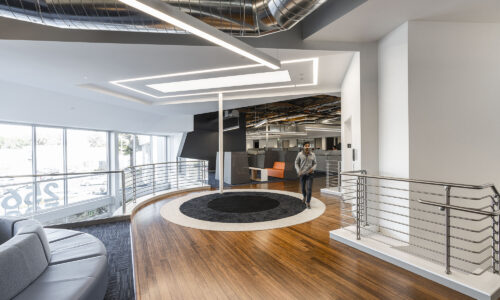
The Biotech Boom: How the Life Sciences Industry is Driving Innovation in Northern California Construction
Biotechnology is a rapidly growing field that is transforming many industries, including the construction industry in Northern California. In recent years, there has been a significant increase in the use of biotechnology in the construction of commercial buildings and infrastructure projects, with companies using biotech innovations to improve the safety, efficiency, and sustainability of their projects.
One of the key drivers of this trend is the growing importance of the life sciences industry, particularly in the Bay Area. According to a report by the Bay Area Council Economic Institute, the Bay Area is the leading life sciences hub in the United States, with over 1,400 life sciences companies and more than 96,000 employees in the sector. The region also accounts for over 30% of all life sciences venture capital investment in the country, making it a hotbed of innovation and entrepreneurship in the field.
As a result, many construction projects in Northern California are investing in biotechnology to meet the specific needs of the life sciences industry. For example, biotechnology can be used to create specialized lab environments that need precise control of temperature and humidity, air filtration, and other unique features. These environments are crucial for research and development in the life sciences, and biotechnology can help ensure that they are safe, efficient, and sustainable.

Another way that biotechnology is being used in the construction industry is through the development of new building materials. Biotech companies are working to create materials that are more environmentally friendly, durable, and cost-effective than traditional building materials. For example, some companies are using biodegradable materials that can break down naturally over time, reducing the amount of waste generated by construction projects. Others are developing materials that are self-healing, meaning that they can repair themselves if they become damaged, reducing the need for costly repairs and maintenance.
One of the most exciting applications of biotechnology in the construction industry is the development of smart buildings. Smart buildings have sensors and other advanced technologies that let them track their own energy use, occupancy levels, and other key metrics in real-time. This information can be used to improve the building’s comfort and productivity while reducing the amount of energy it uses.
Many construction companies in Northern California are collaborating with biotech firms to develop new smart building technologies. Companies are making sensors that can detect changes in air quality, temperature, and humidity. This will let building managers adjust the ventilation and heating, ventilation, and air conditioning (HVAC) systems to improve the air quality inside the building. Others are working on advanced lighting systems that can adjust the color and intensity of light based on the time of day and the needs of the occupants.

With all of the advantages that biotechnology has for the construction sector, there are still obstacles that must be overcome. One of the biggest challenges is the cost of these technologies, which can be prohibitively expensive for some construction projects. Additionally, there are concerns about the long-term safety and environmental impacts of some biotech materials, particularly those that are still in the early stages of development.
Despite these challenges, the trend toward biotechnology in the construction industry shows no signs of slowing down. As the life sciences industry continues to grow in Northern California, construction companies will need to adapt and innovate to meet the unique needs of this sector. Biotechnology offers a promising path forward, with the potential to create safer, more efficient, and more sustainable buildings and infrastructure projects.
In conclusion, biotechnology is a rapidly growing trend in the construction industry. Biotech innovations are changing how construction companies work on projects. For example, smart buildings and building materials that don’t harm the environment are being made possible. As the Bay Area continues to establish itself as the leading life sciences hub in the United States, it is likely that the use of biotechnology in the construction industry will only continue to grow and evolve.



